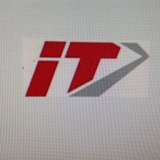Title Page
-
Site
-
Location
-
Inspected by
-
Date
Corrective Maintenance
Accessibility Checklist
-
1. Is adequate accessibility provided in all equipment and components requiring maintenance, inspection, removal, or replacement?
-
2. Is a transparent window or quick-opening metal cover used for visual inspection access?
-
3. Are access openings without covers used when this is not likely to degrade performance?
-
4. Is a hinged door used when physical access is required (instead of a cover plate held in place by screws or other fasteners)?
-
5. If lack of available space for opening the access prevents use of a hinged opening, is a cover plate with captive quick-opening fasteners used?
-
6. If a screw-fastened access plate is used, are no more than four screws used?
-
7. On hinged access doors, is the hinge placed on the bottom, or is a prop provided so that the door will stay open without being held if unfastened in a normal installation?
-
8. Are items located so that other large items that are difficult to remove do not prevent access to them?
-
9. Are components placed so that there is sufficient space to use test probes and other required tools without difficulty?
-
10. Are units placed so that structural members do not prevent access to them?
-
11. Are components to which frequent access is required accessible without the removal of other components?
-
12. Is the equipment designed so that it is not necessary to remove any assembly from a major component to troubleshoot that assembly?
-
13. Can screwdriver-operated controls be adjusted with the handle clear of any obstruction?
-
14. Are units laid out so that maintenance technicians are not required to retrace their movements during equipment checking?
-
15. Is enough access room provided for tasks that necessitate the insertion of two hands and two arms through the access?
-
16. If the maintenance technician must be able to see what he is doing inside the equipment, does the access provide enough room for the technician's hands or arms and still provide for adequate view of what he is to do?
-
17. Are access doors made in whatever shape is necessary to permit passage of components and implements?
-
18. Are units removable from the installation along a reasonably shaped line?
-
19. Are heavy units (more than 25 lb.) installed within normal reach of a technician for purposes of replacement?
-
20. Are provisions made for support of units while they are being removed or installed?
-
21. Are rests or stands provided on which units can be placed to prevent damage to delicate parts?
-
22. Are access points individually labeled so that they can be easily identified with nomenclature in the maintenance manuals?
-
23. Are accesses labeled to indicate what can be reached through this point (label on cover or close thereto)?
-
24. Are access openings free of sharp edges or projections that could injure the technician or snag clothing?
-
25. Are human strength limits considered in designing all devices that must be carried, lifted, pulled, pushed, and turned?
-
26. Are environmental factors (cold weather, darkness, etc.) considered in design and location of all manipulatable items of equipment?
-
27. Are units that are frequently pulled out of their installed positions mounted on roll-out racks, slides, or hinges?
-
28. Are easy overrides provided for limit stops for the replacement of racks and drawers?
Completion
-
Additional Observations
-
Technician Name & Signature









